|
|
|
Книги издательства «Cambridge University Press»
|
It is hard to imagine a classroom where mental mathematics is not used every day. However, setting aside a regular time for mental mathematics ensures that children have plenty of experience and practice in this important area of the curriculum. This small book gives that practice, and encourages children to think about all aspects of number. As well as questions of recall involving all areas of the mathematics curriculum, and basic mental manipulation, there are problems to intrigue and fascinate children. Mental Maths 5 is for advanced top juniors and early secondary students. The answers are all given in the accompanying Mental Maths Answers. |
|
It is hard to imagine a classroom where mental mathematics is not used every day. However, setting aside a regular time for mental mathematics ensures that children have plenty of experience and practice in this important area of the curriculum. This small book gives that practice, and encourages children to think about all aspects of number. As well as questions of recall involving all areas of the mathematics curriculum, and basic mental manipulation, there are problems to intrigue and fascinate children. Mental Maths 6 is suitable for advanced top juniors and early secondary students. The answers are all given in the accompanying Mental Maths Answers. |
|
It is hard to imagine an infant classroom where mental mathematics is not used every day. However, setting aside a regular time for mental mathematics ensures that children have plenty of experience and practice in this important area of the curriculum. This small book gives that practice, and encourages children to think about all aspects of number. As well as questions of recall and basic mental manipulation, there are problems to intrigue and fascinate children. This book is likely to be most useful for 6 to 7 year olds. The answers are all given in the accompanying teacher’s book, Mental Maths for Ages 5 to 7. The new national curriculum gives a high profile to mental maths. This book is fun, as well as providing standard practice. Teachers can give children a set of questions to do while they work with a child that needs individual attention. |
|
Microbiology and Biotechnology is a title in the new Cambridge Advanced Sciences series. It has been developed specifically for the new specifications for Advanced Level Biology for teaching from September 2000. Microbiology and Biotechnology has been endorsed by OCR for use with the OCR Biology specification A. It provides full coverage of the Biology option module of the same name. In combination with other books in the series it provides full coverage of the Advanced Level specifications. Learning objectives are clearly defined, so that students know exactly what they need to learn. Self-assessment questions (with answers) and exam-style end-of-chapter exercises offer excellent opportunities for independent study. Chapter introductions and summaries provide the basis for structured revision. Series gives comprehensive OCR syllabus coverage, so these are the only books students will need. Each book clearly defines the learning objectives that are covered, so students know exactly what they need to learn. This text is a complete and self contained accompaniment to the optional Advanced Level Biology module of the same name. |
|
Telecommunications is a title in the new Cambridge Advanced Sciences series. It has been developed specifically for the new specifications for Advanced Level Physics for teaching from September 2000. Telecommunications has been endorsed by OCR for use with the OCR Physics specification A. It provides full coverage of the Physics option module of the same name. In combination with other books in the series it provides full coverage of the Advanced Level specifications. Learning objectives are clearly defined, so that students know exactly what they need to learn. Self-assessment questions (with answers) and exam-style end-of-chapter exercises offer excellent opportunities for independent study. Chapter introductions and summaries provide the basis for structured revision. Full-colour illustration and student-friendly design make the science accessible to all. Series gives comprehensive OCR syllabus coverage, so these are the only books students will need. Each book clearly defines the learning objectives that are covered, so students know exactly what they need to learn. This text is a complete and self contained accompaniment to the optional Advanced Level Physics module of the same name. |
|
This completely new title is written to specifically cover the new IB Diploma Mathematical Studies syllabus. The significance of mathematics for practical applications is a prominent theme throughout this coursebook, supported with Theory of Knowledge, internationalism and application links to encourage an appreciation of the broader contexts of mathematics. Mathematical modelling is also a key feature. GDC tips are integrated throughout, with a dedicated GDC chapter for those needing more support. Exam hints and IB exam-style questions are provided within each chapter; sample exam papers (online) can be tackled in exam-style conditions for further exam preparation. Guidance and support for the internal assessment is also available, providing advice on good practice when writing the project. |
|
The world's best-selling grammar series for learners of English. English Grammar in Use Fourth edition is an updated version of the world's best-selling grammar title. It has a fresh, appealing new design and clear layout, with revised and updated examples, but retains all the key features of clarity and accessibility that have made the book so popular around the world. This edition includes an eBook which has the same grammar explanations and exercises found in the printed book, plus other great features. You can listen to all of the example sentences from the book, record your answers to exercises, highlight text, bookmark pages and add your own personal notes. |
|
A new series of Exam Preparation guides for the IB Diploma Mathematics HL and SL and Mathematical Studies. This exam preparation guide for the core content of the IB Diploma Mathematics Higher Level course and breaks the course down into chapters that summarise material and present revision questions by exam question type, so that revision can be highly focused to make best use of students' time. Students can stretch themselves to achieve their best with 'going for the top' questions for those who want to achieve the highest results. Worked solutions for all the mixed and 'going for the top' questions are included, plus exam hints throughout. Guides for Mathematics Standard Level and Mathematical Studies are also available. |
|
This title forms part of the completely new Mathematics for the IB Diploma series. This highly illustrated coursebook, available in both print and e-book formats, has been written to specifically cover the new IB Higher Level syllabus. Based on the new group 5 aims, the progressive approach encourages cumulative learning. Features include: a dedicated chapter exclusively for combined exercises; plenty of worked examples; questions colour-coded according to grade; exam-style questions; feature boxes of hints and tips. The print book includes a CD-ROM providing a complete e-version of the book, all the options chapters, extension worksheets, prior learning sheets, calculator skills sheets and fill-in proofs. These additional materials are also included in the e-book version. |
|
In June 2008, Justin Yifu Lin was appointed Chief Economist of the World Bank, right before the eruption of the worst global financial and economic crisis since the Great Depression. Drawing on experience from his privileged position, Lin offers unique reflections on the cause of the crisis, why it was so serious and widespread, and its likely evolution. Arguing that conventional theories provide inadequate solutions, he proposes new initiatives for achieving global stability and avoiding the recurrence of similar crises in the future. He suggests that both the crisis and global imbalances originated from the excess liquidity created by US financial deregulation and loose monetary policy, and recommends the creation of a global Marshall Plan and a new supranational global reserve currency. This thought-provoking book will appeal to academics, graduate students, policy makers and anyone interested in the global economy. |
|
The 'Flynn effect' is a surprising finding, identified by James R. Flynn, that IQ test scores have significantly increased from one generation to the next over the past century. Flynn now brings us an exciting new book which aims to make sense of this rise in IQ scores and considers what this tells us about our intelligence, our minds and society. Are We Getting Smarter? features fascinating new material on a variety of topics including the effects of intelligence in the developing world; the impact of rising IQ scores on the death penalty, cognitive ability in old age and the language abilities of youth culture; as well as controversial topics of race and gender. He ends with the message that assessing IQ goes astray if society is ignored. As IQ scores continue to rise into the twenty-first century, particularly in the developing world, the 'Flynn effect' marches on. |
|
Despite its position at the heart of Europe and its quintessentially European nature, Switzerland's history is often overlooked within the English-speaking world. This comprehensive and engaging history of Switzerland traces the historical and cultural development of this fascinating but neglected European country from the end of the Dark Ages up to the present. The authors focus on the initial Confederacy of the Middle Ages; the religious divisions which threatened it after 1500 and its surprising survival amongst Europe's monarchies; the turmoil following the French Revolution and conquest, which continued until the Federal Constitution of 1848; the testing of the Swiss nation through the late nineteenth century and then two World Wars and the Depression of the 1930s; and the unparalleled economic and social growth and political success of the post-war era. The book concludes with a discussion of the contemporary challenges, often shared with neighbours, that shape the country today. |
|
face2face Second edition is the flexible, easy-to-teach, 6-level course (A1 to C1) for busy teachers who want to get their adult and young adult learners to communicate with confidence. face2face Second edition Pre-intermediate Presentation Plus offers you an exciting new way to use the Student's Book material in class. Whether you've got a computer and projector or an interactive whiteboard, this software facilitates heads-up teaching, encouraging your students to interact even more with each other and with their learning material.Presentation Plus features all the lessons from the Student's Book, along with the answers. Also included is the class audio and video. |
|
Touchstone, together with Viewpoint, is a six-level English program based on research from the Cambridge English Corpus. Each Student's Book contains approximately 90 hours of material across 12 topic-based units — with additional grammar and pronunciation practice added for the Second Edition. Student's Book, Level 1 is at the beginning level (A1). This version of the Student's Book also contains an activation code that grants access to the Online Workbook, Level 1 for 12 months. The Online Workbook provides practice of the language studied in the Student's Book. Exercises are graded automatically and students can easily track their progress and scores. |
|
Thoroughly revised and updated, the new edition of this acclaimed and best-selling guide offers a rich blend of practical advice and real-life examples. The authors draw on fifty years of experience, providing detailed step-by-step guidance designed to help students and researchers write and present scientific manuscripts more successfully through knowledge, practice, and an efficient approach. Retaining the user-friendly style of the previous editions, this fourth edition has been broadened to include detailed information relevant to today's digital world. It covers all aspects of the writing process, from first drafts, literature retrieval, and authorship to final drafts and electronic publication. A new section provides extensive coverage of ethical issues, from plagiarism and dual publication to honesty in reporting statistics. Both the text and 30 hands-on exercises include abundant examples applicable to a variety of writing contexts, making this a powerful tool for researchers and students across a range of disciplines. |
|
The Cambridge Companion to George Bernard Shaw is an indispensable guide to one of the most influential and important dramatists of the theater. The volume offers a broad-ranging study of Shaw with essays by a team of leading scholars. The Companion covers all aspects of Shaw's drama, focusing both on the political and theatrical context, while the extensive illustrations showcase productions from the Shaw Festival in Canada. In addition to situating Shaw's work in its own time, the Companion demonstrates its continuing relevance, and applies some of the newest critical approaches. |
|
The idea of human rights is rightly considered to be one of the very biggest of the big thoughts of the early twenty-first century. The object of this book is to capture a sense of the variety of the platforms within which human rights law is practised today and reflects the dynamic interrelationships that have grown up between these various levels. It also has a critical edge, where the chapters reflect on the way the subject has been handled in the authors sub-field, how it has achieved what has been expected (or has not) or produced unexpected side-effects, with judgments about the efficacy of human rights law (set against the standards of the field itself or some other goals) not being withheld where it is appropriate for these to be made. Written by world-class academics, this Companion will be essential reading for students and scholars of human rights law. |
|
In the history of modern theater Ibsen is one of the dominating figures. The sixteen chapters of this Companion explore his life and work. The plays are grouped and discussed chronologically; among the thematic topics are discussions of Ibsen's comedy, realism, lyric poetry and feminism. Substantial chapters account for Ibsen's influence on the international stage, including an interview with ex-RSC director John Barton and an essay by Arthur Miller exploring Ibsen's challenge to contemporary theater and film. Essential reference materials include a full chronology, list of works, and essays on twentieth-century criticism and further reading. |
|
In the Victorian period, the British novel reached a wide readership and played a major role in the shaping of national and individual identity. As we come to understand the ways the novel contributed to public opinion on religion, gender, sexuality and race, we continue to be entertained and enlightened by the works of Dickens, George Eliot, Thackeray, Trollope and many others. This second edition of the Companion to the Victorian Novel and its contexts has been updated fully, taking account of new research and critical methodologies. There are four new chapters and the others have been thoroughly updated, as has the guide to further reading. Designed to appeal to students, teachers and readers, these essays reflect the latest approaches to reading and understanding Victorian fiction. |
|
Demonstrating not only how to write for orchestra but also how to understand and enjoy a score, The Cambridge Guide to Orchestration is a theoretical and practical guide to instrumentation and orchestration for scholars, professionals and enthusiasts. With detailed information on all the instruments of the orchestra, both past and present, it combines discussion of both traditional and modern playing techniques to give the most complete overview of the subject. It contains fifty reduced scores to be re-orchestrated and a wide range of exercises, which clarify complex subjects such as multiple stops on stringed instruments, harmonics and trombone glissandi. Systematic analysis reveals the orchestration techniques used in original scores, including seven twentieth-century compositions. This Guide also includes tables and lists for quick reference, providing the ranges of commonly used instruments and the musical names and terminology used in English, German, Italian and French. |
|